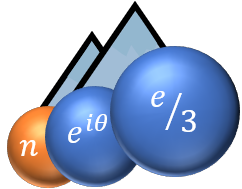We consider a two-particle interferometer in the quantum Hall regime, where voltage sources applied to ohmic contacts inject electronic excitations into a pair of copropagating edge channels and are sent to collide at a quantum point contact. Current fluctuations at the output of the interferometer have been shown to be a very useful tool to probe the quantum statistics and indistinguishability of the injected excitations. For an ideal scenario, the noise is completely suppressed when the incoming excitations are synchronized. However, recent experiments [1] performed in the integer quantum Hall regime at filling factor 2 have observed an incomplete reduction of the noise. In contrast to other injection schemes, this experiment cannot be explained by Coulomb interactions. Here, we analyze the impact of channel mixing due to inter-edge tunneling on the current noise measured at the output of the interferometer. We show that this mixing can be responsible for an incomplete suppression of the noise, thereby reducing the visibility of the interference [2]. Our model provides a good quantitative agreement with the experimental data. Similar features in the noise are observed at filling factor 2/5, which suggest that channel mixing may play a relevant role in the fractional quantum Hall regime, too.
References
[1] I. Taktak et al., Nat. Commun. 13, 5863 (2022)
[2] M. Acciai et al., Phys. Rev. B 105, 125415 (2022)

 PDF version
PDF version
